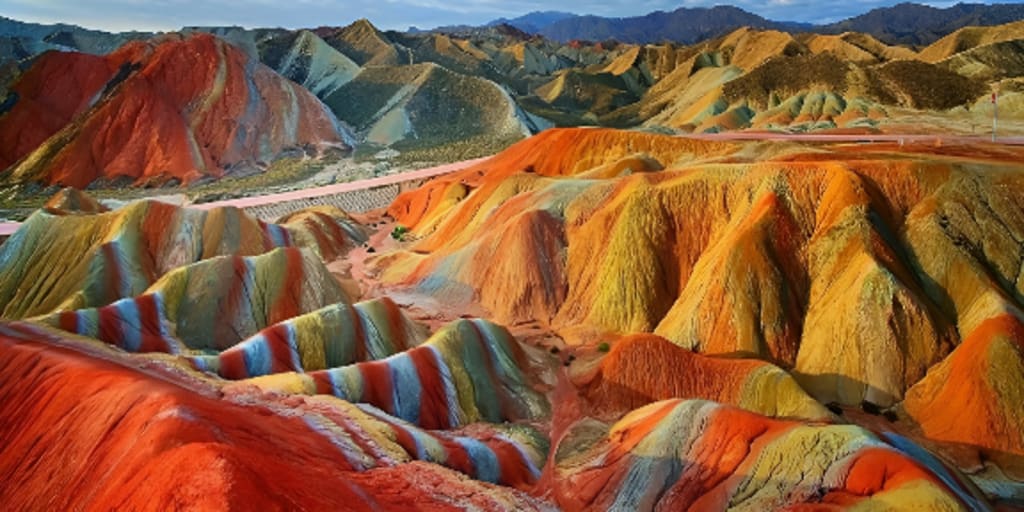
From icy landscapes of frozen tundras to towering geological formations, our planet boasts an abundance of amazing geological formations. Yet, there are some landscapes that challenge our notions of the earthly terrain and appear almost extraterrestrial. Read on for more on these remarkable geological anomalies. Part 1 features five formations beginning with number 15 on the list.
Number 15: White Pocket
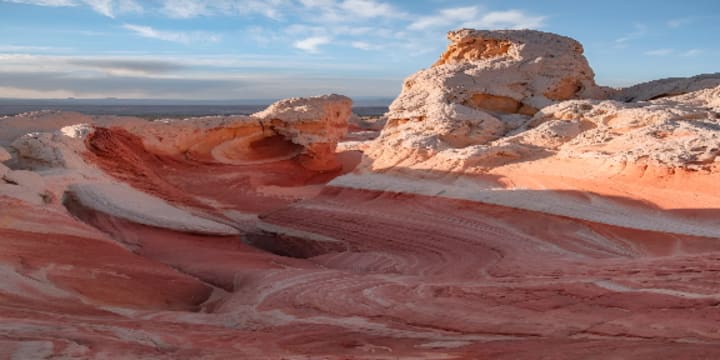
White Pocket stands out as a unique and visually captivating geological formation within the Vermilion Cliffs National Monument, Northern Arizona. Nestled in the Paria Canyon Vermilion Cliffs Wilderness, an area renowned for its rugged beauty and extraordinary rock configurations, this site is a gem awaiting exploration. Just over an hour east of Page, Arizona, White Pocket unveils a breathtaking display of Navajo Sandstone, with swirling red and white patterns carved meticulously over eons by the forces of water and wind erosion. The outcome is a spellbinding panorama that seems almost frozen in time, resembling a snapshot from a surreal painting or an undulating wave locked in stasis. Notably, these rock formations often showcase intricate and delicately contorted play of light, imparting an otherworldly and dreamy ambiance. Due to its remote location, White Pocket receives fewer visitors compared to iconic Arizona landmarks like the Grand Canyon or Antelope Canyon. This seclusion enhances its allure, offering a serene and intimate outdoor experience. Photographers and nature enthusiasts are especially drawn to White Pocket, enticed by its unique and photogenic landscapes. The interplay of patterns, textures, and vibrant hues in the Sandstone structures provides a limitless canvas for creative compositions. Additionally, hikers and backpackers find solace in exploring the surrounding wilderness, further elevating the appeal of this extraordinary site.
Number 14: Sutton Salt Lake
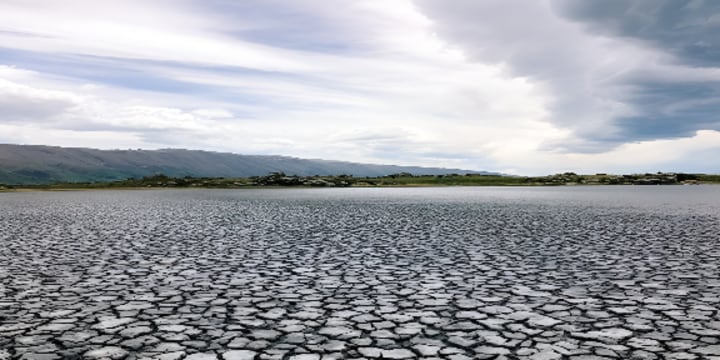
The genesis of Sutton Salt Lake stems from a fascinating natural process that sets it apart from other salt lakes globally. Tracing back to an ancient inland sea that once blanketed the Canterbury Plains during the last ice age, this lake's inception transpired as the climate shifted and the sea retreated, leaving behind substantial salt deposits concealed beneath the earth's surface. The orchestration of this formation unfolds during the wetter seasons, typically spanning from autumn to spring. During these months, rainwater fills the basin of a dormant volcanic crater, subsequently dissolving the concealed salt deposits. As time progresses, the lake expands, with rainwater continually infusing it and saturating the water with dissolved salts. As the arid summer months roll in, the lake's waters evaporate under the intensifying sun, leaving behind a captivating tapestry of crystalline salt patterns on its surface. These intricate salt formations resemble delicate art pieces, refracting sunlight into a mesmerizing dance of luminous brilliance. What distinguishes Sutton Salt Lake is the stark contrast it presents against the backdrop of New Zealand's luxuriant greenery. The stark white salt crystals juxtaposed with the untouched emerald landscape creates an unparalleled visual spectacle. The lake's waters appear to evaporate before one's eyes, a fleeting marvel that enchants all who bear witness.
Number 13: Panzkascala
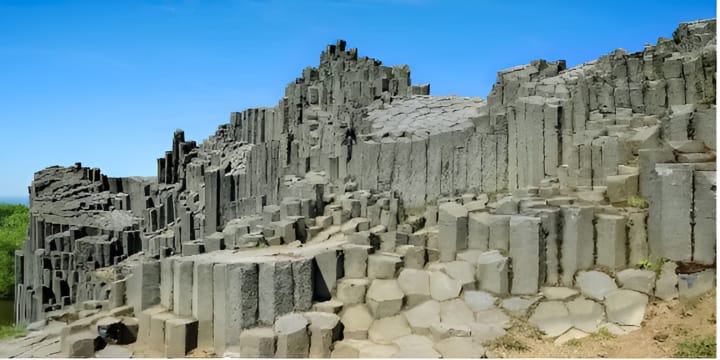
Nestled within the heart of the Bohemian Paradise in the Czech Republic, Panzkascala stands as a geological enigma, inviting us to traverse the depths of time. Carved over countless millennia, this venerable structure stands as a sentinel from ancient epochs, fashioned through the patient touch of erosion. The story of Panzkascala unfolds in the juxtaposition of resilient sandstone and the inexorable might of natural forces. Its venerable age of over 60 million years situates it in an era when dinosaurs roamed the Earth, a testament to its ancient lineage. Gazing up at the grandeur of Panzkascala, one can't help but be overwhelmed by its sheer majesty. These hexagonal columns, known as the "Pillars of Creation," ascend towards the heavens, their towering height approaching nearly 200 feet, a challenge issued to the sky itself to match their magnificence. However, this imposing exterior belies a welcoming interior, beckoning inquisitive souls to explore its hidden recesses. Often referred to as "Mansion Rock" due to its resemblance to a distant castle, Panzkascala has held the status of the Czech Republic's oldest geological reserve since 1895.
Number 12: Smoking Hills
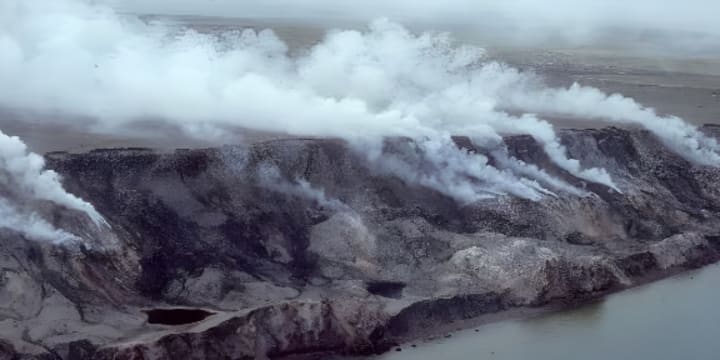
Positioned along the Arctic Ocean within Canada's Northwest Territories, these desolate red-striped rocks have been ablaze for centuries, acquiring the evocative name of the Smoking Hills. This barren and smoldering terrain must have surely been a perplexing spectacle for the initial European sailors who came across its distant and mysterious stretch. The initial documented encounter with these fiery hills dates back to the early 1800s, when Irish explorer Captain Robert McClure chanced upon this peculiar terrain. Sent to the Canadian Arctic on a mission to locate the explorer Sir John Franklin, who had disappeared half a decade prior while attempting to map the Northwest Passage, McClure's expedition had a specific purpose. According to reports, McClure and his team gathered a fragment of the smoldering rock during their journey, only to discover that it burned a hole through their wooden desk. The prevailing assumption at the time was that volcanic activity underlay the phenomenon, yet the truth is more nuanced. The underground oil shales prevalent in the area contain a surplus of sulfur and brown coal. As a consequence, the rock has the tendency to spontaneously ignite upon contact with oxygen as erosion gradually exposes the flammable gases. As time has passed, the emission of sulfur dioxide from this burning process has altered the acidity of the nearby ecosystem, giving rise to a unique landscape that differs from the surrounding terrain. The normally somber mudstone of the hills is baked and bleached by the unrelenting heat, manifesting as striking bands of red and orange across the cliffs. This exceptional natural phenomenon implies that these Arctic hills have been emitting columns of smoke for centuries, predating the arrival of European expeditions to the area. Native communities residing in the vicinity, such as the Anuvialuit, have known these lands for generations, gathering coal from the area. The nearest settlement, over 60 miles away, bears the name "Palutok," which translates to "place of soot" or "place of coal" in the Anuvialuit language.
Number 11: Painted Mountains of Tabriz
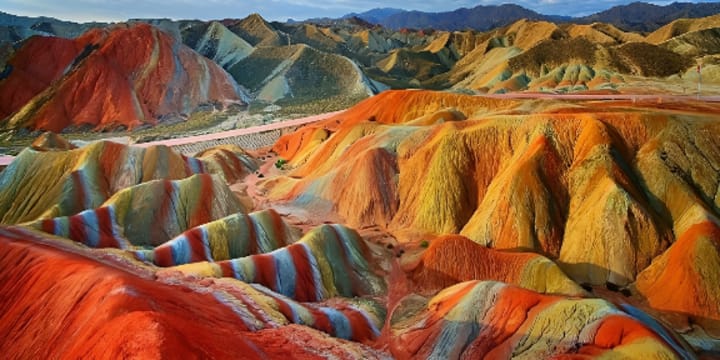
Also recognized as the Elladiglar Mountains, these resplendent mountains appear as if they were meticulously painted with a spectrum of colors across their rugged terrain. Situated near the historic city of Tabriz in Northwestern Iran, the Painted Mountains present a breathtaking panorama resembling a vivid rainbow streaked across the landscape. The mesmerizing chromatic palette of these mountains arises from an abundance of mineral veins interwoven within the earth's structure. Over the passage of countless millennia, these minerals, in conjunction with sandstone, have undergone compression and oxidation, resulting in the captivating bands of color—ranging from red, white, and yellow to gray and orange—that adorn this rocky expanse. The local Azeri Turkish language reflects the essence of these mountains, as "Allah" signifies color and "dag" translates to mountain. The name is truly fitting, for these mountains stand as a testament to nature's artistic ingenuity. Walking amidst this living masterpiece is akin to stepping into an ever-changing artwork, where each stride unveils a fresh array of colors and textures, fostering an overwhelming sense of reverence for the Earth's creative processes. While the Painted Mountains of Tabriz share thematic similarities with other celebrated painted mountains worldwide, such as China's Zhangye National Geopark or Peru's Rainbow Mountain, they present an exceptional spectacle of nature's brilliance. Every layer of vivid hues narrates a chapter of Earth's ancient history, offering a tantalizing glimpse into the monumental processes that have shaped our planet over millennia. These mountains, steeped in history, were once inhabited by an array of flora and fauna, a history that remains shrouded in mystery and fascination. A picture may convey a thousand words, yet the mountains of Tabriz exude a richness that defies quantification.
This region encompassing the Painted Mountains of Tabriz bears a storied history, a tapestry woven with threads of human settlement spanning ancient times. The city itself boasts an extensive heritage, with roots stretching back millennia, serving as a cultural, commercial, and political hub that has borne witness to the rise and fall of numerous dynasties and empires. The Painted Mountains, standing as silent sentinels, have observed these transformative epochs since time immemorial.
About the Creator
iCi BuZz
Bleed on paper.
Upload the creative juices.
Replicate my inner self on blogs.
Sounds like you?
Welcome to my inky fraternity.
Yours truly,
iCi BuZz





Comments
iCi BuZz is not accepting comments at the moment
Want to show your support? Become a pledged subscriber or send them a one-off tip.